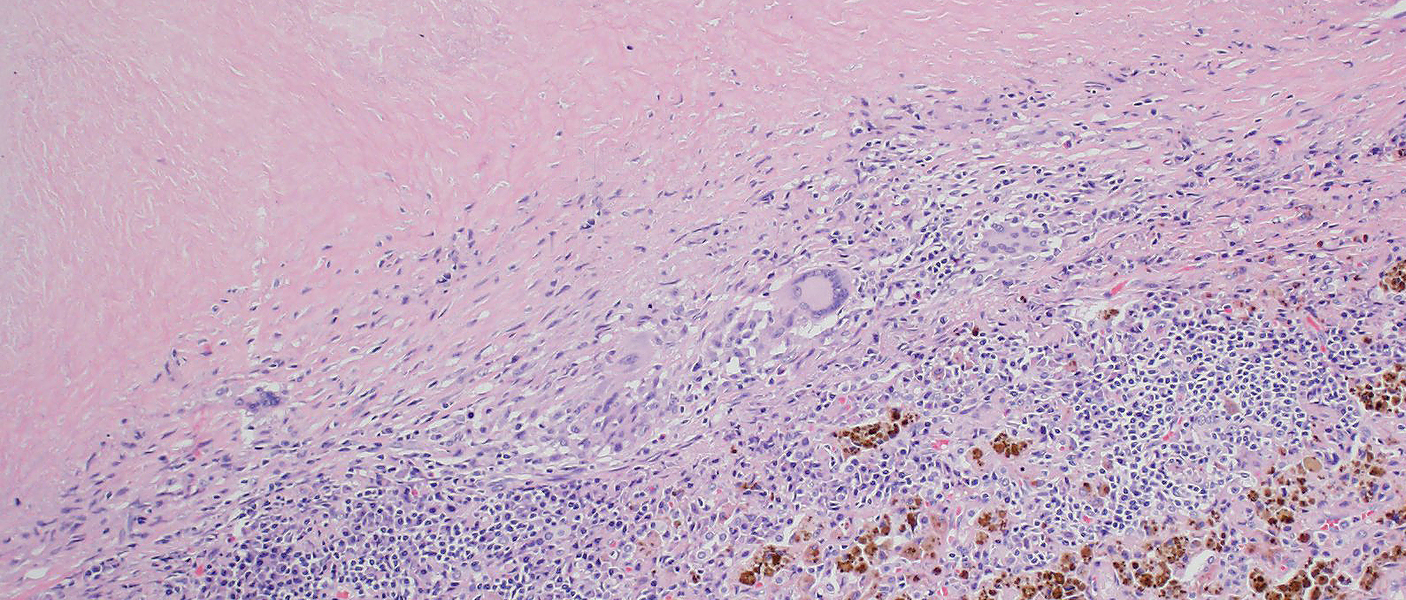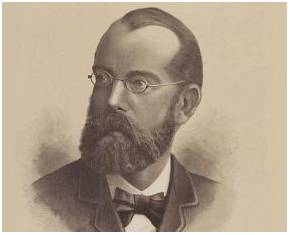

Tuberculosis is the shadow of misery,” said Dr. José Félix Oletta, a former Venezuelan health minister. “If there’s a disease that is a marker of poverty, it’s tuberculosis.” This quote appeared in the New York Times on March 20, 2018. Although once on the decline in Venezuela, tuberculosis (TB) has made a dramatic resurgence since the country’s economy has fallen into decline.
Sadly, this scenario is being played out all over the world. TB is the ninth leading cause of death worldwide and the leading infectious killer with one fourth of the world’s population being infected with TB.
 Robert Koch, photo: www.cdc.gov/tb/The World Health Organization (WHO) and the Center for Disease Control (CDC) each have exceptional websites filled with interesting and amazing facts about TB, including the unfortunate realization that although slow progress is being made, the world (and the US) is not on track to reach its goal of eliminating TB by 2030.
Robert Koch, photo: www.cdc.gov/tb/The World Health Organization (WHO) and the Center for Disease Control (CDC) each have exceptional websites filled with interesting and amazing facts about TB, including the unfortunate realization that although slow progress is being made, the world (and the US) is not on track to reach its goal of eliminating TB by 2030.
March 24th marks World TB Day. It is not a day of celebration, but rather an opportunity to educate and build awareness about the disease and how it is spread, diagnosed, treated, and how it can be stopped. Interestingly, March 24th was chosen because it was on that date in 1882 that Dr. Robert Koch announced the cause of TB was a bacterium, Mycobacterium tuberculosis (M. tb.) This bacterium is one of the world’s most successful pathogens, able to become resistant to first and second line drugs and resilient against vaccination attempts.
The theme for World TB Day is “Wanted: Leaders for a TB-Free United States. We can make history. End TB.”
Here in the Department of Pathology at the University of Michigan we are among the “Leaders and Best” working to help treat and find cures for tuberculosis.
Drs. Matt Schaller and Steve Kunkel have active research projects looking at how the adaptive immune response controls TB infection and granuloma formation. In particular, they are investigating ways to improve the host response to M. tb. infections. These studies involve a novel respiratory route for immunizations, investigating the immunotherapeutic potential of specific subsets of T cells, and a mechanism to generate these cells. Their studies test the potential for cell-based immunotherapies that may be important for the treatment of multi-drug or extremely drug resistant TB. As a first step towards this, they have found that the transfer of a specific type of T cell into infected mice can control mycobacterial burden in the lung.
 Photo: Kinyoun stain of Mycobacterium from VersaTREK automated broth growth medium, courtesy of Stephanie Agozino.Because of the relative difficulty of working with human samples, Drs. Denise Kircshner (U-M Department of Microbiology and Immunology) and Jennifer Lindermann (U-M Department of Chemical Engineering) have developed computer-generated models of TB granulomas. These models facilitate experimentation in methods of drug delivery and immune system manipulation by performing hundreds of virtual experiments centered around hypotheses related to TB granuloma formation. One of the models, known as GranSim calculates the complex interactions that occur between different immune cells and mycobacterium in the lung as a function of time. These models contribute to our understanding of what occurs during a TB infection and may lead to new treatment protocols that result in a more effective elimination of TB.
Photo: Kinyoun stain of Mycobacterium from VersaTREK automated broth growth medium, courtesy of Stephanie Agozino.Because of the relative difficulty of working with human samples, Drs. Denise Kircshner (U-M Department of Microbiology and Immunology) and Jennifer Lindermann (U-M Department of Chemical Engineering) have developed computer-generated models of TB granulomas. These models facilitate experimentation in methods of drug delivery and immune system manipulation by performing hundreds of virtual experiments centered around hypotheses related to TB granuloma formation. One of the models, known as GranSim calculates the complex interactions that occur between different immune cells and mycobacterium in the lung as a function of time. These models contribute to our understanding of what occurs during a TB infection and may lead to new treatment protocols that result in a more effective elimination of TB.
The Department of Pathology also has leaders in TB diagnosis and susceptibility in the Clinical Microbiology Laboratory. Ms. Stephanie Agozino, the Senior Technologist in the Mycology and Mycobacteriology division, described the clinical work done each day to identify the Mycobacterium tuberculosis complex in human samples. They typically process 20-30 specimens daily and then batch culture specimens for acid fast bacilli culture. At the time of this writing there were 687 cultures incubating. In 2017 there were 7 cases of patients affected by Mycobacterium tuberculosis complex. If mycobacterium is found to be present in a sample, it is subcultured utilizing the Maldi-TOF and/or DNA probes (for M.tuberculosis complex, M. avium complex, and M. gordonae) for indentification. For rapidly growing mycobacteria, they perform susceptibility testing in house. All isolates are saved for a year or more, in case additional testing is needed.
In honor of World TB Day, Annual Reviews has compiled a special article collection here which is free to read until May 1, 2018.
We encourage everyone to visit the websites of the CDC and WHO to educate themselves about TB and how we can work together to eradicate the disease.
Our Pulmonary division pathologists, Drs. Kenneth Hughes and Tao Huang, have provided some exceptional micrograph examples of TB in the accompanying gallery.
M. tb. in lung, photo courtesy of Dr. Tao Huang
M. tb., photo courtesy of Dr. Tao Huang.
M. tb. in lung, acid fast stain, photo courtesy of Dr. Tao Huang.
M. tb. Acid Fast Bacillus stain, photo courtesy of Dr. Kenneth Hughes.
Gross sample of TB in the lung, photo courtesy of Dr. Kenneth Hughes
TB necrotizing granulomatous inflammation, H&E, photo courtesy of Dr. Kenneth Hughes.
TB suppurative granulomatous inflammation, H&E, photo courtesy of Dr. Kenneth Hughes
 ON THE COVER
ON THE COVER
Breast team reviewing a patient's slide. (From left to right) Ghassan Allo, Fellow; Laura Walters, Clinical Lecturer; Celina Kleer, Professor. See Article 2014Department Chair |

newsletter
INSIDE PATHOLOGYAbout Our NewsletterInside Pathology is an newsletter published by the Chairman's Office to bring news and updates from inside the department's research and to become familiar with those leading it. It is our hope that those who read it will enjoy hearing about those new and familiar, and perhaps help in furthering our research. CONTENTS
|
 ON THE COVER
ON THE COVER
Autopsy Technician draws blood while working in the Wayne County morgue. See Article 2016Department Chair |

newsletter
INSIDE PATHOLOGYAbout Our NewsletterInside Pathology is an newsletter published by the Chairman's Office to bring news and updates from inside the department's research and to become familiar with those leading it. It is our hope that those who read it will enjoy hearing about those new and familiar, and perhaps help in furthering our research. CONTENTS
|
 ON THE COVER
ON THE COVER
Dr. Sriram Venneti, MD, PhD and Postdoctoral Fellow, Chan Chung, PhD investigate pediatric brain cancer. See Article 2017Department Chair |

newsletter
INSIDE PATHOLOGYAbout Our NewsletterInside Pathology is an newsletter published by the Chairman's Office to bring news and updates from inside the department's research and to become familiar with those leading it. It is our hope that those who read it will enjoy hearing about those new and familiar, and perhaps help in furthering our research. CONTENTS
|
 ON THE COVER
ON THE COVER
Director of the Neuropathology Fellowship, Dr. Sandra Camelo-Piragua serves on the Patient and Family Advisory Council. 2018Department Chair |

newsletter
INSIDE PATHOLOGYAbout Our NewsletterInside Pathology is an newsletter published by the Chairman's Office to bring news and updates from inside the department's research and to become familiar with those leading it. It is our hope that those who read it will enjoy hearing about those new and familiar, and perhaps help in furthering our research. CONTENTS
|
 ON THE COVER
ON THE COVER
Residents Ashley Bradt (left) and William Perry work at a multi-headed scope in our new facility. 2019Department Chair |

newsletter
INSIDE PATHOLOGYAbout Our NewsletterInside Pathology is an newsletter published by the Chairman's Office to bring news and updates from inside the department's research and to become familiar with those leading it. It is our hope that those who read it will enjoy hearing about those new and familiar, and perhaps help in furthering our research. CONTENTS
|
 ON THE COVER
ON THE COVER
Dr. Kristine Konopka (right) instructing residents while using a multi-headed microscope. 2020Department Chair |

newsletter
INSIDE PATHOLOGYAbout Our NewsletterInside Pathology is an newsletter published by the Chairman's Office to bring news and updates from inside the department's research and to become familiar with those leading it. It is our hope that those who read it will enjoy hearing about those new and familiar, and perhaps help in furthering our research. CONTENTS
|
 ON THE COVER
ON THE COVER
Patient specimens poised for COVID-19 PCR testing. 2021Department Chair |

newsletter
INSIDE PATHOLOGYAbout Our NewsletterInside Pathology is an newsletter published by the Chairman's Office to bring news and updates from inside the department's research and to become familiar with those leading it. It is our hope that those who read it will enjoy hearing about those new and familiar, and perhaps help in furthering our research. CONTENTS
|
 ON THE COVER
ON THE COVER
Dr. Pantanowitz demonstrates using machine learning in analyzing slides. 2022Department Chair |

newsletter
INSIDE PATHOLOGYAbout Our NewsletterInside Pathology is an newsletter published by the Chairman's Office to bring news and updates from inside the department's research and to become familiar with those leading it. It is our hope that those who read it will enjoy hearing about those new and familiar, and perhaps help in furthering our research. CONTENTS
|
 ON THE COVER
ON THE COVER
(Left to Right) Drs. Angela Wu, Laura Lamps, and Maria Westerhoff. 2023Department Chair |

newsletter
INSIDE PATHOLOGYAbout Our NewsletterInside Pathology is an newsletter published by the Chairman's Office to bring news and updates from inside the department's research and to become familiar with those leading it. It is our hope that those who read it will enjoy hearing about those new and familiar, and perhaps help in furthering our research. CONTENTS
|
 ON THE COVER
ON THE COVER
Illustration representing the various machines and processing used within our labs. 2024Department Chair |

newsletter
INSIDE PATHOLOGYAbout Our NewsletterInside Pathology is an newsletter published by the Chairman's Office to bring news and updates from inside the department's research and to become familiar with those leading it. It is our hope that those who read it will enjoy hearing about those new and familiar, and perhaps help in furthering our research. CONTENTS
|

MLabs, established in 1985, functions as a portal to provide pathologists, hospitals. and other reference laboratories access to the faculty, staff and laboratories of the University of Michigan Health System’s Department of Pathology. MLabs is a recognized leader for advanced molecular diagnostic testing, helpful consultants and exceptional customer service.